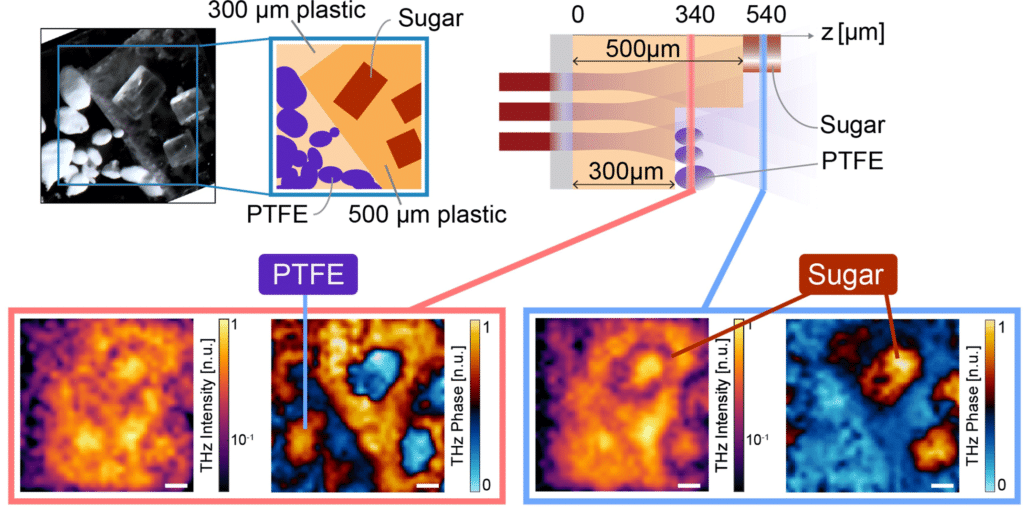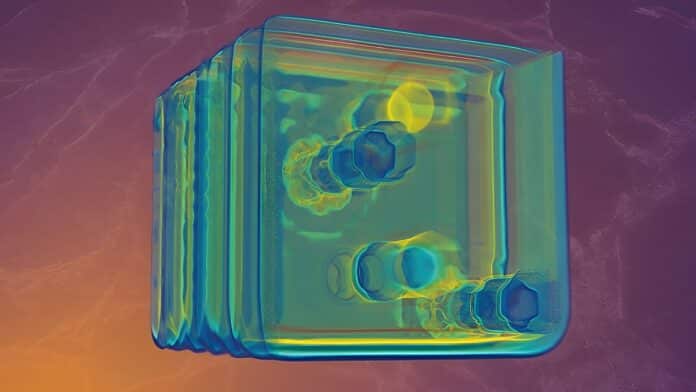The electromagnetic spectrum contains terahertz waves, which have frequencies between microwave and infrared light. They possess several characteristics that make them incredibly valuable, such as their ability to pierce opaque things harmlessly.
However, the inability to see small things is one of the fundamental issues with terahertz imaging.
Loughborough University scientists recently demonstrated that terahertz waves could locate and recognize embedded objects and features, such as cracks and bubbles, in microscopic three-dimensional space. By developing a unique approach called ‘time-resolved nonlinear ghost imaging,’ scientists could see the smaller objects more clearly.
Their approach – terahertz wave camera – combines advanced detection methods, manipulating light and measuring how it travels through an object over time. It can capture 3D images of microscopic items hidden inside small objects by probing 4mm by 4mm by 600µm (microns) cubes with terahertz radiation.
It also allowed scientists to separate and distinguish information from different depths and create detailed, 3D images of the cubes with very high accuracy. This allowed them to observe the chemical and physical nature of items inside them in a way that was not possible before.
Using their camera, scientists observed features hidden inside the cubes as small as 60 microns, roughly the width of a human hair.

Lead researcher Dr. Luana Olivieri says, “This new approach is enabling because it allows us to see things that are too small or obscured to be within reach of traditional methods. Reading the story of how light has traveled through an object is often a complex task. Still, with this process, we can retrieve encrypted information, unraveling the multidimensional data to unveil hidden and ‘invisible’ objects at the microscale.”
“Most importantly, terahertz allows us to see through objects that are not transparent with visible light and produce 3D images.”
Dr. Luke Peters from the Emergent Photonics Research Centre (EPicX) said, “In medicine, terahertz imaging could be used to detect and diagnose skin cancers that are not visible to the naked eye.”
“In security, it could be used to improve the resolution of scanners used to search people for concealed weapons or explosives, without physical pat-downs or intrusive searches.”
“And in materials science, terahertz imaging could be used to study the properties of new materials and identify defects or impurities that may affect their performance.”
“Our work allows us to expand these capabilities into the microscopic domain. I am enthusiastic about the potential benefit for society.”
Professor Marco Peccianti – director of EPicX – commented: “This work was developed as part of the Emergent Photonics Research Centre at Loughborough University, whose scope is to assemble a critical core of scientists around major technological-economic and societal challenges and approach them through photonics and terahertz technologies.”
Journal Reference:
- Luana Olivieri, Luke Peters, Vittorio Cecconi, Antonio Cutrona et al. Terahertz Nonlinear Ghost Imaging via Plane Decomposition: Toward Near-Field Micro-Volumetry. ACS Photonics. DOI: 10.1021/acsphotonics.2c01727
